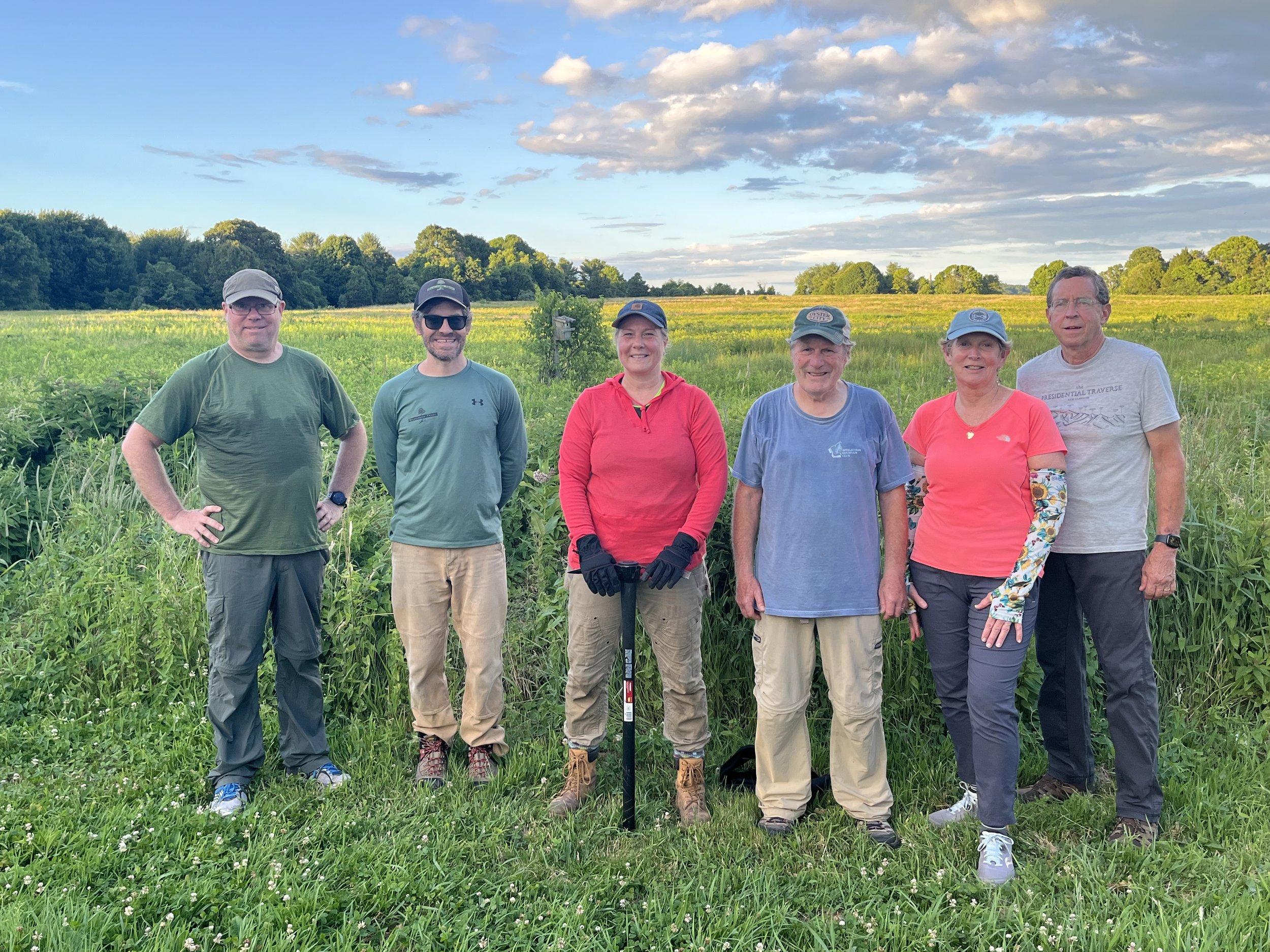By Thomas Patti, Communications Coordinator
Across a decade-plus of land protection projects, environmental education campaigns, tree planting initiatives, and park restoration efforts, the Brockton community has matched Wildlands Trust’s enthusiasm for local conservation every step of the way. This summer has been no different, leading to a banner season for our youth conservation programming in and around this city of over 100,000 people.
2024 marks the 10th year that Wildlands has engaged Brockton-area youth in environmental education. Since 2015, Wildlands, along with Manomet Conservation Sciences, has coached and sponsored the Brockton High School Envirothon Team. In summer 2022, we moved Green Team, a paid service-learning program for high school students and recent graduates, from Plymouth to Brockton. Recognizing the ever-growing appetite for youth conservation opportunities in Brockton, we introduced a second summer program in 2024: Climate Crew.
This summer, the 12 members of Green Team worked exclusively in D.W. Field Park, carrying out necessary improvements as part of our D.W. Field Park Initiative. Tasks included waste management, gardening, water quality testing, and providing valued input on the D.W. Field Park Master Plan.
Photo gallery: Green Team completed various improvement projects at D.W. Field Park in Brockton this summer. Photos by Clare Cunningham/Manomet Conservation Sciences.
Climate Crew has blossomed in its inaugural summer. Part of the Brockton Kids Lead the Way Initiative and generously funded by the LSP Association, Climate Crew equips eight young conservationists with technical skills and professional knowledge as they construct an outdoor classroom at Hancock Elementary School in Brockton. The classroom will include a learning space with picnic tables and a whiteboard, two nature trail loops featuring a boardwalk and interpretive signage, and a climate resiliency garden. According to Stewardship Programs Manager Zoë Smiarowski, Climate Crew has succeeded on multiple levels.
“It has been incredible to see Climate Crew engage with the classroom space in the way they have,” Zoë said. “It’s so special to watch these young leaders develop stewardship skills and apply them to a project that will benefit their community for years to come. We’ve completed so much work with their help, with plenty of laughs along the way.”
Photo gallery: Climate Crew is working to build an outdoor classroom at Hancock Elementary School in Brockton. Photos by Clare Cunningham/Manomet Conservation Sciences and Rachel Bruce/Wildlands Trust.
Climate Crew has even garnered national attention: on August 4, Ivy Scott of the Boston Globe published a compelling piece about Massachusetts teens and young adults taking local initiative to combat climate change and feelings of powerlessness. Climate Crew served as the centerpiece example.
We particularly love this quote from Climate Crew member Xaven Studer: “When you think about climate issues, it feels like a giant thing that most people don’t touch, even if they care about it, because it’s too overwhelming. But it matters, even the little things ... and seeing it unfurl, I’m excited I’m contributing to something important."
You can read the article here.
Members of both Green Team and Climate Crew work to restore lost connections between their urban communities and the wild places around them. But many of them have never experienced a night under the stars, insulated from the sounds of the city by vast, untouched forests. In late July, for the first time since Green Team moved to Brockton, we hosted the members of both of our summer programs in an overnight camping retreat at the Stewardship Training Center in Plymouth. Green Team and Climate Crew members explored the pine barren forests of Halfway Pond Conservation Area, enjoyed s’mores around a campfire, and made lasting memories and friendships with like-minded peers.
Photo gallery: Last month, members of Green Team and Climate Crew gathered at the Stewardship Training Center in Plymouth for an overnight camping retreat. Photos by Clare Cunningham/Manomet Conservation Sciences.
“As the sun set and the stars came out, most of our crewmembers remarked on how they couldn’t remember the last time they’d seen stars and a completely dark sky,” said Programming Coordinator Max Phelps. “In that moment, I understood how truly special and important this campout was for our kids.”
Green Team concluded on August 8, while Climate Crew will meet for its final session next week. Stay tuned as work on the Hancock School outdoor classroom continues!
We thank all the young adults who embraced these projects with passion and purpose. We are confident that the future of our region’s natural resources is in more than capable hands.
Learn more about all our Brockton youth programs at wildlandstrust.org/youth-programs.





























































